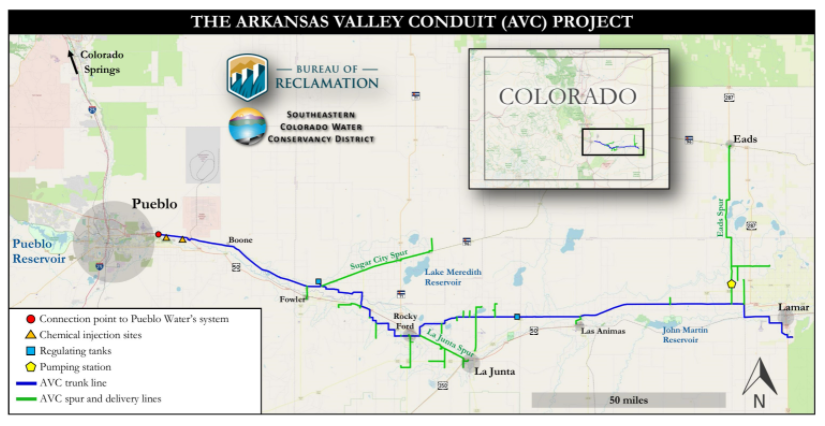
The Arkansas Valley Conduit received an additional $90 million in federal funding. Once it's done, the 130-mile pipeline will bring clean drinking water to 50,000 people in southeastern Colorado whose tap water is contaminated with naturally occurring radioactive contaminants.
“This is great news for the AVC and the people of Southeastern Colorado. Funding at this level is needed to keep the AVC moving forward,” said Bill Long, President of the Southeastern Colorado Water Conservancy District. “The Southeastern District is looking forward to the day when we can fulfill the promise to bring clean drinking water to the people of the Lower Arkansas Valley.”
The pipeline received the largest amount of funding of all of the projects included in this year's Bipartisan Infrastructure Law. This new funding brings total federal funding for the conduit to more than $321 million. In total, it could cost as much as $610 million.
The conduit was first authorized in the 1960s but has stalled off and on because of funding issues. Construction began last year to connect the main pipeline to the Pueblo Water system at 36th Lane and U.S. Highway 50 east of the city.
Delivery lines have also been extended to Avondale and Boone. Those lines were funded by $1.2 million from the Pueblo County Commissioners through American Rescue Plan Act (ARPA) funding.

In addition, $22 million has been paid to Pueblo Water for the conveyance, treatment, and transmission of water from Pueblo Reservoir.
The U.S. Bureau of Reclamation and the Southeastern Colorado Water Conservancy District are building the conduit.
- $100 million coming to Arkansas Valley project to continue pipeline work to bring clean water to southeastern Colorado
- Work is (finally) underway on the long awaited pipeline to bring clean water to Southeastern Colorado
- Arkansas River water users scrutinize Aurora Water’s plans for its newly bought farm in Otero County
- After decades of stalls, a Lower Arkansas River Valley water project could finally start this year. (Or next.)
- After Nearly Six Decades, Funds Approved To Start Construction On The Arkansas Valley Conduit
- Management Plan Adopted For Long-Awaited Arkansas Valley Conduit
- Lower Arkansas Valley Deals With Contaminated Water; Solution Slow To Materialize








